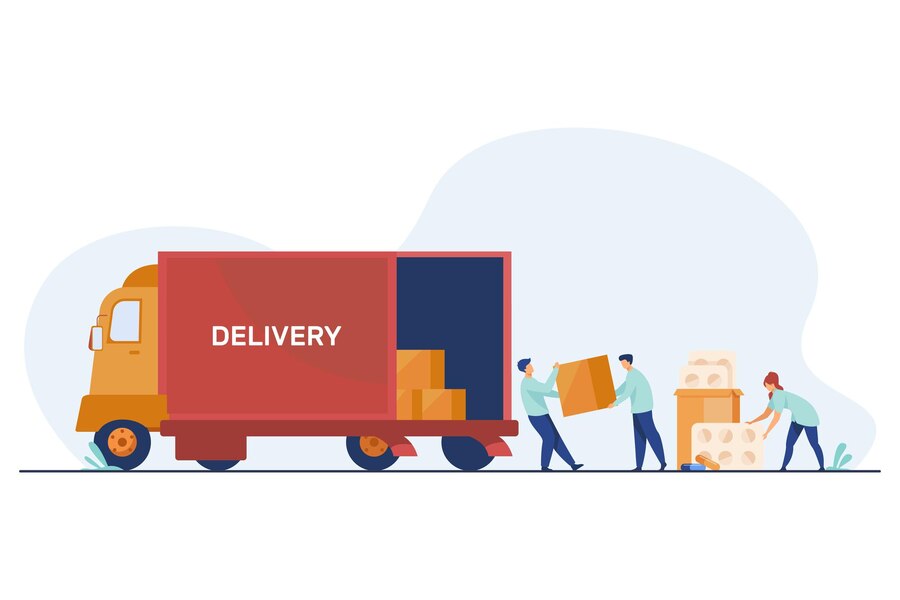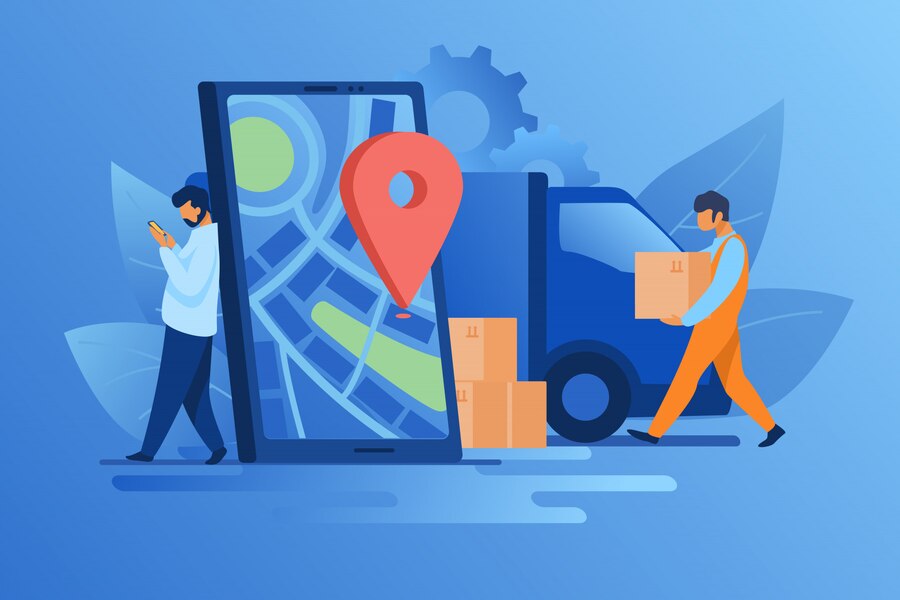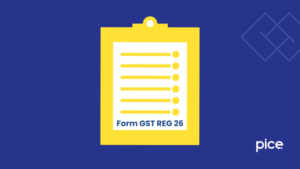An Introduction to Bills to ship to in GST in India
- 19 Aug 24
- 17 mins

An Introduction to Bills to ship to in GST in India
- What is meant by bill-to-ship transactions?
- Place of Supply for Various Scenarios of bill-to-ship to under GST
- Bill To and Ship To under Eway Bill
- Delivery at a Different Place
- Situations with Different ‘Bill to' And ‘Ship to' Addresses
- Tax Implications
- Responsibility to Generate Eway Bill
- Exemptions Issued on E-Way Bills
- Who Will Issue E-Way Bill in the "Bill to Ship To" Case?
- Eligibility of ITC in Case of "Bill To Ship To"
- Conclusion
Key Takeaways
- Place of Supply Accuracy: Accurately identifying the place of supply is crucial for determining the correct GST charges.
- Documentation Integrity: Maintaining clear and accurate documentation, including invoices and E-Way Bills, is essential for GST compliance.
- E-Way Bill Compliance: Adhering to E-Way Bill requirements is mandatory, with non-compliance leading to penalties and possible goods seizure.
- Input Tax Credit (ITC) Eligibility: Proper documentation of goods receipts and tax payments is necessary to claim ITC.
- International BTST Handling: International transactions are zero-rated, requiring strict compliance with export regulations for smooth operations and ITC benefits.
Bill-to-Ship-to (BTST) transactions are common in the realm of indirect taxation under GST (Goods and Services Tax) in India. These business transactions occur when the billing address and shipping address for the goods are different. Knowing these transactions is crucial for businesses to ensure compliance with GST regulations and to manage supply chain logistics efficiently.
What is meant by bill-to-ship transactions?

- Bill-to-Party: The entity or person who is invoiced (billed) for the goods.
- Ship-to Party: The entity or person to whom the goods are physically shipped and delivered.
- Supplier: the entity or person who actually supplies the goods.
This transaction model is used when the party ordering the goods is not the final recipient. For example, a business might order goods from a supplier but direct that they be shipped directly to a customer or a different branch of the business.
Place of Supply for Various Scenarios of bill-to-ship to under GST
In the context of the GST (Goods and Services Tax) framework in India, understanding the place of supply in Bill-to-Ship-To (BTST) scenarios is crucial for determining the applicable payment of tax (CGST, SGST/UTGST, or IGST) and ensuring compliance. Here's how the place of supply is determined in various BTST scenarios:
- Inter-State Supplies
- If the bill-to and ship-to locations are in different states, the transaction is generally considered an interstate supply.
- The place of supply will be the location of the bill-to party.
- IGST (Integrated GST) is applicable in these cases.
- Intra-State Supplies
- If both the bill-to and ship-to locations are in the same state, the supply is considered intra-state.
- The place of supply is again the location of the bill-to party.
- CGST (Central GST) and SGST (State GST) or UTGST (Union Territory GST) are applicable.
Examples and clarifications
- Example 1: A supplier in Maharashtra ships goods to Karnataka based on the order of a company in Delhi.
Place of Supply: Delhi (Bill-to location).
Tax Applicable: IGST, because the supply involves multiple states.
- Example 2: A supplier in Tamil Nadu ships goods to Andhra Pradesh based on the order of a company also located in Tamil Nadu.
Place of Supply: Tamil Nadu (Bill-To location).
Tax Applicable: CGST + SGST, because it's an intra-state transaction.
Bill To and Ship To under Eway Bill
Under the GST regime in India, the "Bill To" and "Ship To" concepts are crucial in the context of Eway Bill generation and tax invoicing, particularly when dealing with goods being shipped to a location different from the billing address.
Key Concepts
- Eway Bill: An Eway Bill is an electronic document required for the movement of goods valued over a certain threshold. It must include details from both the "Bill To" and "Ship To" addresses, if they differ.
- Tax Invoice: This is the primary document evidencing the supply and must contain the GST details of the "Bill To" party, and in cases where "Bill To" and "Ship To" are different
Delivery at a Different Place

When goods are delivered to a location different from the billing address in a GST context, it is typically referred to as a "Ship To" transaction. This scenario involves distinct roles for the parties involved, each of which has specific implications under the GST framework:
Key Elements of "Ship To" Transactions:
- E-Way Bill: The E-Way Bill must accurately reflect the "Ship To" address, which is the actual delivery location of the goods. This is essential for compliance with GST regulations regarding the movement of goods.
- Tax Invoice: The tax invoice should include the GST details of the "Bill To" party but must also specify the "Ship To" address. The invoice will determine how the GST is applied, particularly whether CGST, SGST, or IGST are applicable based on the states involved.
- Registered Person: The supplier or the "Bill To" party, if registered under GST, is responsible for generating the E-Way Bill. This ensures that all legal requirements are met for the physical movement of goods.
- Ultimate Recipient: This is the "Ship To" party, the actual receiver of the goods. The ultimate recipient's location often determines the place of supply, which in turn impacts the GST calculation.
- Document Transfer: The ownership and risk associated with the goods are typically transferred at the point of delivery, unless otherwise specified in the contract or invoice. This includes documents of title or other legal documents indicating ownership.
Compliance and Documentation
- Physical Movement: It's crucial that the physical movement of goods is documented through the E-Way Bill system, which helps track the transport and ensure that it aligns with tax regulations.
- Field Address: Both the "Bill To" and "Ship To" addresses must be correctly entered in the E-Way Bill. Any error in these details can lead to compliance issues and may hinder the smooth transport of goods.
- GST Invoice Details: The invoice must clearly distinguish between the billing and shipping addresses, ensuring that the GST components (CGST, SGST, and IGST) are correctly applied based on the nature of the transaction (inter-state or intra-state).
Example of Different ‘Bill to' and ‘Ship to' Addresses
Here's a practical example illustrating how different 'Bill To' and 'Ship To' addresses function within the context of GST regulations and the E-Way Bill system in India:
Scenario
- Company A is headquartered in Mumbai, Maharashtra. It manages procurement and finances for the entire corporation.
- Company B is a manufacturing unit located in Chennai, Tamil Nadu, that operates as part of Company A’s operations.
- Supplier C is based in Gurugram, Haryana, and specializes in manufacturing industrial equipment.
Transaction Details
- Company A places an order with Supplier C for a shipment of industrial pumps. However, the pumps are needed directly at the manufacturing site of Company B in Chennai for immediate installation.
Address Details
- Bill To: Company A, Mumbai, Maharashtra. Supplier C raises the invoice and sends it to Company A's Mumbai office.
- Ship To: Company B, Chennai, Tamil Nadu. The goods are directly shipped from Gurugram, Haryana, to the site in Chennai.
E-Way Bill Considerations
- When Supplier C prepares the E-Way Bill, they must include:
- GSTIN of Company A (as the party being billed).
- Delivery address of Company B (as the actual destination of the goods).
- The E-Way Bill must reflect that the goods are moving from Haryana to Tamil Nadu, and this is crucial for tax purposes.
GST Implications
- Since the shipment crosses state lines and involves different 'Bill To' and 'Ship To' locations, IGST (Integrated Goods and Services Tax) will be applicable.
- Company A will be charged IGST by Supplier C, which can be claimed as an input tax credit by Company A in Mumbai, given that it is registered under GST and the goods/services purchased are used for business purposes.
Documentation
- The tax invoice should clearly mention both the 'Bill To' and 'Ship To' addresses, along with the correct GSTIN details, to ensure compliance and proper tax credit allocation.
- Accurate entry of field details in both the GST invoice and the E-Way Bill is critical to avoid discrepancies and potential penalties during transport or audits.
Situations with Different ‘Bill to' And ‘Ship to' Addresses

In the GST regime, situations where the 'Bill To' and 'Ship To' addresses differ are common and have specific implications for compliance, documentation, and tax liability. Here are some typical scenarios and considerations:
Common Scenarios
Drop Shipping
- A retailer orders goods from a supplier but directs them to be shipped directly to the customer.
- Bill To: Retailer's address.
- Ship To: Customer's address.
Inter-company Transfers
- A company sends goods from one branch to another, where the branches are registered separately under GST.
- Bill To: Head office or ordering branch.
- Ship To: Receiving Branch.
Consignment Sales
- Goods are sent to a consignee, who sells the goods on behalf of the consignor.
- Bill To: Consignor's address.
- Ship To: Consignee's address.
Documentation and Compliance
- E-Way Bill: Essential for tracking the movement of goods. It should include the GSTIN of the 'Bill To' party and the physical address of the 'Ship To' location.
- Tax Invoice: Must reflect both the 'Bill To' and 'Ship To' addresses, ensuring that the applicable taxes (CGST, SGST, IGST) are correctly charged based on the place of supply.
Tax Implications
GST Application
- If 'Bill To' and 'Ship To' are in the same state, CGST and SGST/UTGST apply.
- If across different states, IGST is applicable.
- Input Tax Credit (ITC): The 'Bill To' party can claim ITC on the GST paid, provided the goods/services are used for business purposes.
E-Way Bill Specifics
- E-Way Bill Form: Details like the E-Way Bill number, the parties' GSTINs, and the addresses must be accurately filled to avoid discrepancies during transit checks.
Challenges in Compliance
- Verification of Addresses: Ensuring that both addresses are accurate on all documents to prevent tax errors and logistical issues.
- Coordination Between Parties: Effective communication is needed to manage the logistics and documentation of shipments, especially in drop-shipping or consignment scenarios.
Impact on Business Operations
- Supply Chain Efficiency: Proper management of these scenarios can lead to more efficient supply chain operations.
- Tax Compliance: Accurate handling of these situations ensures compliance with GST laws, avoiding penalties, and facilitating smooth audits.
Responsibility to Generate Eway Bill
In the context of the GST framework in India, the Eway Bill is a crucial document for the movement of goods valued over a certain threshold. Understanding who is responsible for generating this bill is essential for compliance and smooth business operations.
Key Aspects of Eway Bill Generation:
Who generates the Eway Bill?
- Registered Supplier: If the supplier is registered under GST, they are typically responsible for generating the Eway Bill when goods are transported from one location to another.
- Registered Buyer: In cases where the supplier is not registered or in specific cases where the buyer takes on this responsibility, the registered buyer must generate the Eway Bill.
- Transporter: If neither the supplier nor the buyer is registered, the responsibility falls to the transporter to generate the Eway Bill.
Information Required in the Eway Bill
- Details of the goods being transported, including their value, description, and the HSN code.
- GSTINs of the supplier and the buyer ('Bill To' party).
- 'Ship To' address, if different from the 'Bill To' address, to ensure the goods are tracked correctly during their movement.
Scenarios Requiring an Eway Bill
- Inter-State Movements: For any movement of goods across state lines, irrespective of the value.
- Intra-State Movements: Usually, only for goods whose value exceeds the threshold specified by the state’s GST regulations.
Compliance & Business Requirements
- Accurate Entry of Details: Ensuring that all fields in the Eway Bill, such as GSTIN, addresses, and invoice numbers, are accurately filled out to avoid penalties.
- Updates and Amendments: The responsible party must update the Eway Bill if there are changes to transit operations or if the vehicle number changes.
Documentation and Record-Keeping
- Tax Invoice Details: Must be aligned with the Eway Bill, particularly the 'Bill To' and 'Ship To' addresses, to ensure compliance during inspections.
- Eway Bill Portal: All stakeholders must ensure that they have access to the Eway Bill portal for generating or modifying Eway Bills.
Exemptions Issued on E-Way Bills
E-Way bills are required for the movement of goods above a certain value threshold. However, there are specific exemptions provided under certain conditions, which can significantly impact logistics and compliance requirements.
Categories of Exemptions
Value of Consignment
- Goods whose total consignment value is less than the specified threshold (generally Rs. 50,000) are exempt from the requirement of an E-Way Bill.
Types of Goods
- Certain goods, as specified in the GST rules, are exempt from E-Way Bills. These typically include perishable items, live animals, and other specified categories that might be subject to rapid transport requirements or are commonly transported in small quantities.
Mode of Transport
- Goods transported by non-motorized conveyances (e.g., carts, bicycles) do not require E-Way Bills.
- Goods transported within specified areas, such as customs ports, airports, and cargo complexes, also typically do not require an E-Way Bill.
Specific Transactions
- Certain specified transactions, which are notified as exempt by the government or GST council, such as supplies meant for specific government schemes or relief efforts.
Distance of Transport
- For intra-state movements within certain states, if the distance is very short (typically less than 10 kilometers) and is from supplier to transporter or from transporter to recipient, an E-Way Bill may not be necessary.
Practical Implications
- Streamlined Operations: Exemptions can help streamline operations for businesses by reducing the bureaucratic overhead associated with generating and managing E-Way Bills for every small consignment or specific exempt categories.
- Compliance: Businesses must be aware of and comply with the specific exemptions to avoid unnecessary penalties. Understanding these can also aid in planning logistics and transport modalities more efficiently.
- Documentation and Record-Keeping: Even if E-Way Bills are not required, maintaining proper tax invoices and transport documents is crucial to the documentation requirements list to substantiate the claims of exemption during inspections or audits.
Who Will Issue E-Way Bill in the "Bill to Ship To" Case?
The responsibility for generating the E-Way Bill in "Bill to Ship To" transactions can vary depending on the parties involved and their registration status under GST. Here’s a detailed look at who is responsible for issuing the E-Way Bill in such cases:

Key Considerations
- Registered Supplier
Typically, if the supplier of goods is registered under GST, they are responsible for generating the E-Way Bill when goods are being transported, regardless of whether the billing and shipping addresses are different.
- Registered Buyer
In cases where the supplier is not registered under GST but the buyer is, the responsibility shifts to the buyer. This often happens in reverse charge scenarios, where the buyer has to comply with all the tax liabilities that a supplier would normally handle.
- Transporter
If neither the supplier nor the buyer is registered under GST, the transporter of the goods takes on the responsibility for generating the E-Way Bill. This is also the case when both the supplier and buyer delegate this responsibility to the transporter, often through explicit agreements.
Document Details Required
- GSTIN of the parties involved, where applicable.
- Transport details, including vehicle number and transporter ID, if a transporter is used.
- Details of the goods being transported, such as description, quantity, and total value,.
- Invoice details, which link to the transaction documents between the supplier, buyer, and, where necessary, the ultimate recipient.
Importance of Accurate Documentation
- Accurately filling out the E-Way Bill is critical to ensuring compliance with GST regulations. Errors or omissions can lead to delays, penalties, or confiscation of goods during transport.
Eligibility of ITC in Case of "Bill To Ship To"
In "Bill To Ship To" transactions under GST (Goods and Services Tax) in India, the eligibility for input tax credit (ITC) hinges on specific conditions relating to the invoicing and the flow of goods. Here's a detailed exploration of how ITC applies in such cases:
Overview of ITC Eligibility
General Rule: Since they are the ones receiving the invoice and paying the GST, the "Bill To" party may claim ITC. This claim is contingent upon the invoice meeting all the criteria specified under GST regulations.
Key Conditions for Claiming ITC
- GST Invoice Compliance: The tax invoice issued must clearly specify the GST details and should match the records that will be submitted in the GST returns.
- Receipt of Goods: The 'Ship To' party (goods recipient) must actually receive the goods, as failing to do so can invalidate the ITC claim, even if the 'Bill To' party has been invoiced and has paid the GST.
- Tax Payment: The supplier should have actually paid the GST to the government. The 'Bill To' party can check this through the GSTR-2A or GSTR-2B form, which reflects the tax payments made by the suppliers.
- Furnishing of Returns: The 'Bill To' party must be diligent in filing their GST returns on time. Delayed returns can affect the eligibility and timing of the ITC claim.
Documentation and Compliance
- Proper Invoicing: Ensure that invoices clearly delineate the 'Bill To' and 'Ship To' details, alongside compliant GSTIN information and a breakdown of CGST, SGST/UTGST, or IGST, as applicable.
- E-Way Bill Requirements: For the transportation of goods, an E-Way Bill should be generated that corroborates the invoice details. This serves as a record for the movement of goods and helps in claiming ITC.
Practical Implications in Different Scenarios
Scenario 1: Inter-State Transaction:
- Goods are shipped from Maharashtra to Karnataka but billed to a customer in Delhi.
- ITC Claim: The Delhi customer can claim ITC on IGST paid, contingent upon the fulfillment of conditions like receipt of goods and tax payment confirmation via GSTR-2A.
Scenario 2: Intra-State Transaction
- Goods are shipped within Maharashtra, but the billing is done by another party within Maharashtra.
- ITC Claim: The billed party can claim ITC on CGST and SGST, provided the compliance checklist is duly met.
Challenges in Claiming ITC
- Verification of Goods Receipt: Sometimes verifying the actual receipt of goods can be challenging, especially in cases where the 'Ship To' party is different from the 'Bill To' party.
- Reconciliation of Invoices with Tax Payments: Ensuring that the invoices are not only received but also match the tax payments reported by the supplier in their returns.
Conclusion
Bill-to-ship transactions add complexity to GST compliance, but understanding these dynamics can significantly streamline business operations and tax handling. Accurate and timely documentation and compliance with E-Way Bill norms are essential to managing these transactions effectively.
💡Facing delays in GST payment? Get started with PICE today and streamline your GST payments. Click here to sign up and take the first step towards hassle-free GST management.




















